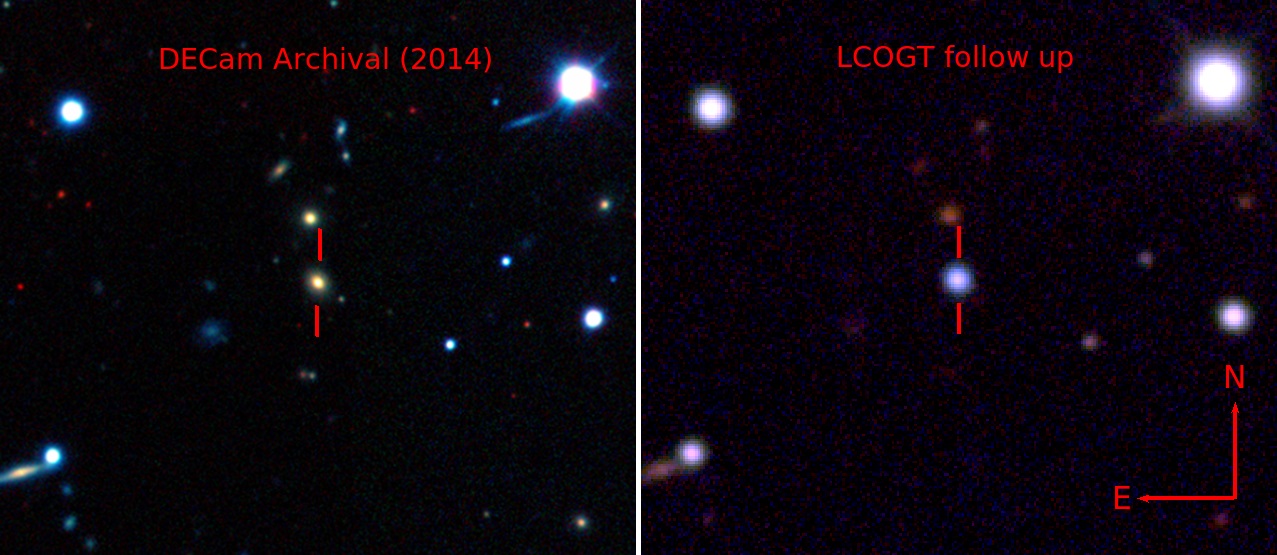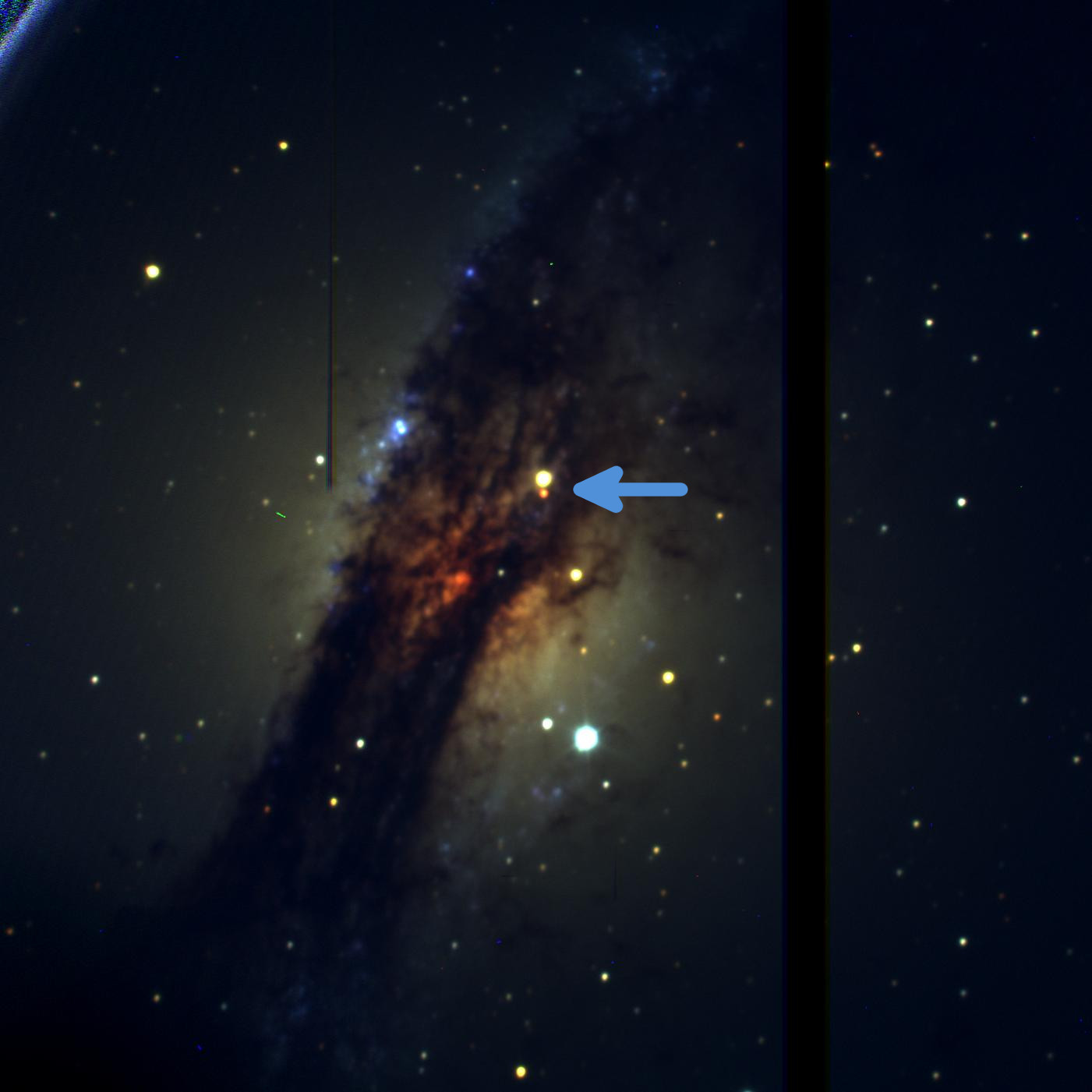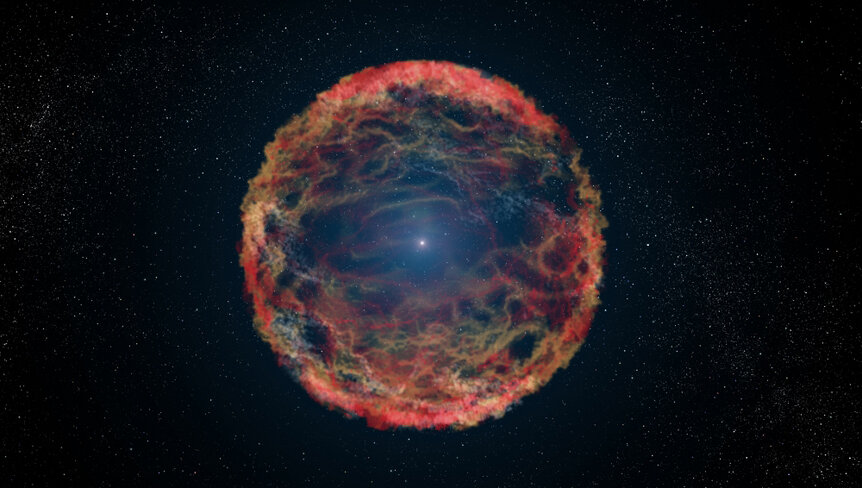One of the most luminous supernovae ever discovered provides evidence that such extremely bright explosions require exotic sources.

In early 2016, in a spot on the sky about halfway between the Big Dipper and Polaris, the most luminous supernova ever observed went off. But there’s no need to check your observing log or photo archive: the explosion occurred in a small galaxy some 3 billion light-years away and never became brighter than 18th magnitude.

Astronomers discovered SN 2016aps, as it is called, on February 22, 2016, using the Pan-STARRS telescope on Haleakala, Hawai‘i. After years of follow-up observations with a number of ground- and space-based telescopes, including Keck and the Hubble Space Telescope, a team led by Matt Nicholl (University of Birmingham, UK) published their findings in Nature Astronomy on April 13th.

According to Nicholl and his colleagues, the radiated energy of the blast was 5 x 1044 joule — about four times our Sun’s total energy output during its entire 10 billion-year lifetime, and 500 times the average radiated energy of a normal supernova.
“This certainly pushes the boundary of what nature can do,” comments Craig Wheeler (University of Texas, Austin).

A 2015 explosion known as ASASSN-15lh was more luminous still, but no one knows whether that one really was a supernova – it could have been a tidal disruption event, where a star is ripped apart by the tidal forces of a supermassive black hole.
In contrast, says Stan Woosley (University of California, Santa Cruz), SN 2016aps “was not near a galactic nucleus, was in a star-forming region, and had a spectrum that looked like other ultra-luminous supernovae.” However, Wheeler isn’t convinced — the event could still have been a tidal disruption event by an intermediate-mass black hole, he says.

If SN 2016aps truly were a supernova, its extreme luminosity could not be explained by radioactive decay or neutrino transport, says Woosley — referring to the “engines” of normal supernovae. The researchers argue that the star may have been surrounded by a thick shell of material, probably outer stellar layers shed earlier on. The collision of the supernova ejecta with that shell could have turned half of its kinetic energy (that is the physical force of the explosion) into radiation. But even then, it’s unclear what made the blast so energetic.
As has been proposed for other superluminous supernovae, the core of the massive progenitor star may have collapsed into a millisecond magnetar, a strongly magnetized neutron star rotating many hundreds of times per second. The magnetar’s spin-down (as a result of magnetic braking) would have provided the power to accelerate the supernova ejecta to tremendous speeds. Or SN 2016aps may have been a pair-instability supernova, in which the formation of electron-positron pairs in the collapsing star’s core trigger a runaway thermonuclear explosion.

Given the relatively strong hydrogen signature in the supernova’s spectrum, Nicholl and his colleagues suggest that the progenitor star may have been the 100-plus solar mass merger remnant of two less massive stars. “Single star models have difficulty retaining hydrogen-rich material until the final years before explosion,” they write, “but mergers in massive binaries can produce the same core mass while retaining a hydrogen envelope.” However, according to both Wheeler and Woosley, a merger remnant scenario is quite speculative.

Woosley thinks superluminous supernovae and SN 2016aps-like events may represent a continuum between normal supernovae and gamma-ray bursts. “In any case, they involve some unique extreme physics and the birth of an exotic object – a rapidly rotating neutron star or a black hole.” Wheeler expects future telescopes, such as the Vera C. Rubin Observatory and the James Webb Space Telescope, to find more events like this new record holder. Indeed, Nicholl’s team argues that JWST could detect an explosion like SN 2016aps out to a redshift of 5, “offering a means to directly probe the deaths of first-generation stars.”